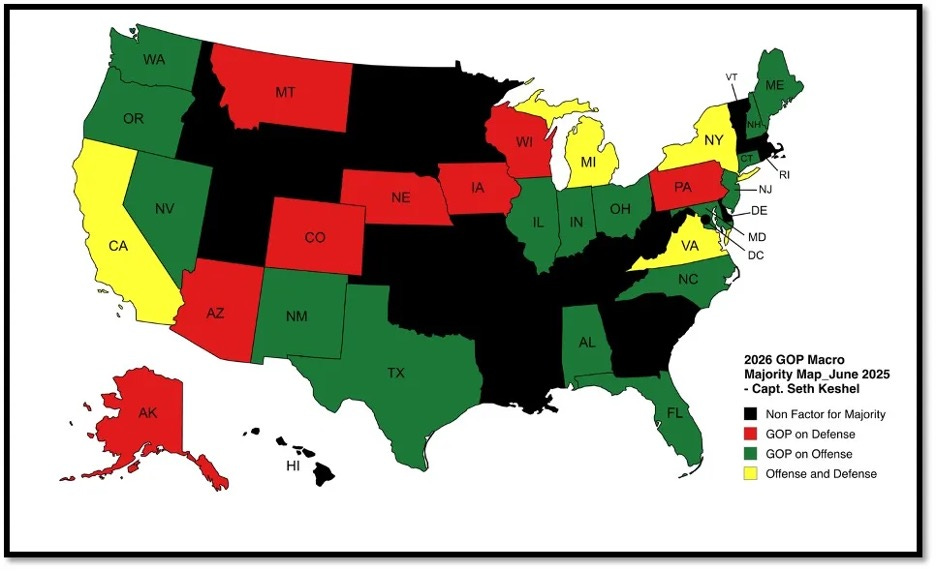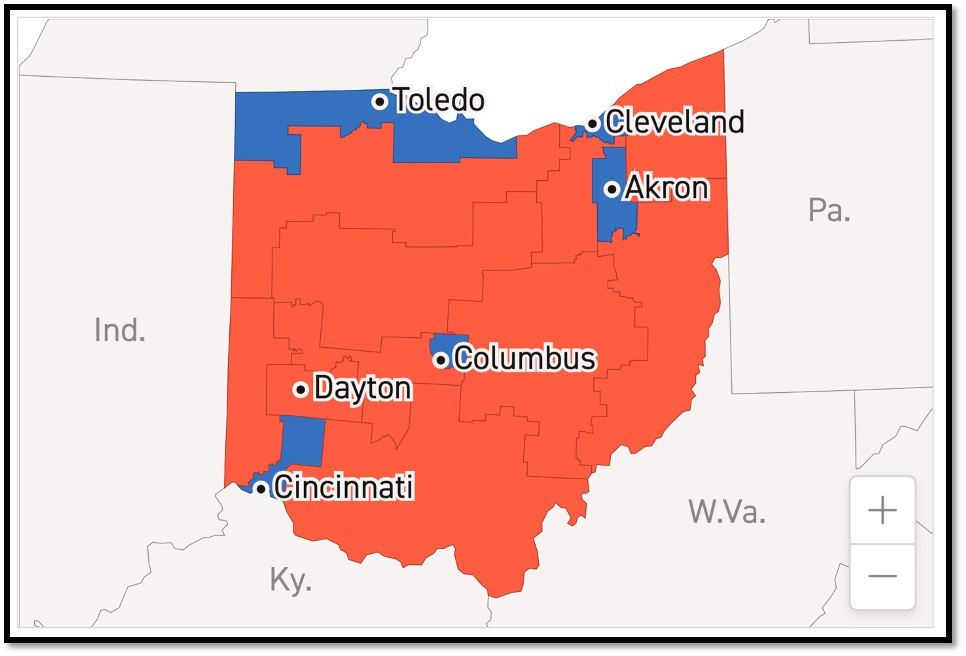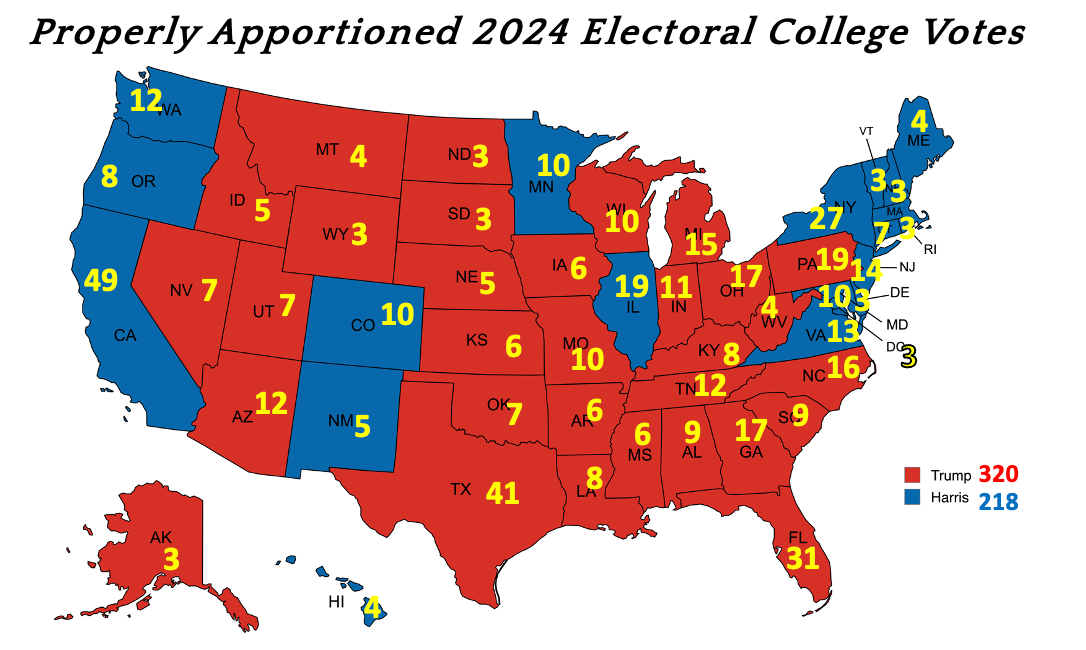The Inside Baseball on Ohio’s Redistricting Efforts and How it Impacts the 2026 Majority
Back of the napkin math is the best math, and the kind that gets the media calling you a crackpot conspiracy theorist. Here’s how the GOP gains 2 to 3 seats by using logic and analysis.
Readers have frequently asked what the impact of Republican redistricting efforts may be on next year’s midterm environment. For those new to the conversation, the GOP-led legislatures of Ohio and Texas are looking to redraw their congressional maps, worth 15 and 38 seats, respectively, in time for the 2026 midterms. This may have the retaliatory impact of pushing California and Illinois to redraw their seats to minimize potential Republican gains, but we shall look at that possibility later.
Today’s article will focus on Ohio, which should get down to business in early fall on the map work for completion by the end of November.
The elected GOP House majority from last November is 220 to 215. The size of this majority varies with member deaths or resignations, but 220 to 215 is my starting point before we consider redrawn districts from anywhere. In last month’s initial look into the 2026 U.S. House battle, I set the starting point at 197 Republican seats, come hell or high water:
Factoring in safe seats only, the GOP is highly unlikely to dip below 197 seats, which already gets them around the damage caused by the average House loss since 1934. If it can hold the 8 seats I considered leaners which they hold today, they’ll be at 205.
That means the GOP has 61 targets when factoring in the 25 Democrat leaners, 21 decisive seats currently held by Democrats, and their own 8 decisive seats which they currently hold.
The GOP majority is, as of today, certain to be no less than 197 seats, and no more than 266, which is almost impossible except for mathematically.
Initial Forecasting for 2026 U.S. House Races (June 2025)
It’s 15 months until the 2026 midterms are fully upon us. Yes, you read that correctly; while it is always election season in some way, with candidates declaring, consultants wheeling and dealing, primaries buzzing, and rallies forming, ballots will be in the mail by this point in September 2026. While much can and will change between now and then, I have already begun digging in on the 435 seats that will decide the U.S. House majority and tell us a lot about how the second half of President Trump’s term will go, at least from a legislative capacity (and whether or not the American people will have to deal with more nonsensical impeachment theatrics).
Furthermore, Ohio is classified as a green state in my national targeting matrix, meaning Republicans are 100% on offense and not at risk of dipping below their current allotment of 10 Congressional seats:
This is how the Buckeye State voted in 2024 in House races, with President Trump carrying the top of the ticket by 11.2%:
Below are the four key takeaways from Ohio’s redistricting process that you need to know for the 2026 showdown:
I. Process
Ohio’s maps expire next year anyway, so this isn’t exactly a scandalous thing occurring. The Democrats will cry foul no matter what because the GOP controls 5 of 7 seats on the redistricting commission and 6 of 7 seats on the State Supreme Court, meaning the GOP is going to force-feed them whatever map they come up with. Do I feel bad about it?
The U.S. Census Bureau Stole At Least 16 Electoral Votes and 15 U.S. House Seats
Since we are quickly approaching the holidays, I’m feeling charitable. I will publish this article with the naive assumption there is no foul play present in the 2024 election, at least in the race for Electoral College votes - meaning I won’t be saying “Trump should have also carried Minnesota,” even though the execution of their elections is about as…
No, because the Republican Party would enjoy a fat majority if not for the rigging of the 2020 U.S. Census. If there is no bipartisan support for the new maps (spoiler: there won’t be), then the legislature can adopt the maps by vote. The only recourse Democrats will have is to get the maps on a referendum to voters, which would take a lot of money, time, and effort to do successfully in a state featuring a Democrat Party nearing extinction. A similar Democrat map repeal effort failed in 2011.
The overall redistricting process is complicated and has many curveballs which could impede redistricting. Signal Cleveland has an excellent article on the fine print you should read, which I have used in paragraphs above.
II. State of the GOP







